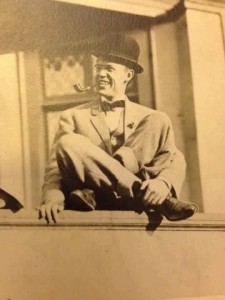
One of my favorite local architects of the Arts & Crafts period is John Hudson Thomas. He was born in Nevada in 1878 and grew up in the San Francisco Bay area. He completed his undergraduate work at Yale University in 1902. After completing graduate work in the Department of Architecture at U.C. Berkeley in 1904, Thomas spent the next two years working for John Galen Howard, implementer of the master plan for the UC campus, and founder of the school of Architecture in 1903. In 1907, Thomas formed a partnership with George Plowman who had also been working for John Galen Howard. Together they designed more than 50 homes that fall within the styles of the Arts & Crafts movement. Considered one of the most innovative architects of the first quarter of this century, John Hudson Thomas designed homes which defy simple categorization, spanning, and sometimes combining, shingle styles, California bungalow, Prairie, mission, even gothic and chalet elements. He was also a master at combining materials in his exteriors.
In 1910, Thomas set up his own office. At about this time he became familiar with the Seccesionist movement, and for the next several years his works included the use of signature motifs, often geometric patterns carved in the exterior and repeated in wood or tile in the interiors.
John Hudson Thomas has several Berkeley landmarks to his credit, including Hume Cloister in the hills on Buena Vista, the shingle-style Capt. Maury House on Shattuck, and the Prairie style Loring House on Spruce Street. He also designed an amazing four-story shingle and siding home that I sold on Shattuck Ave. in Berkeley. It has the most exceptional wainscotting I have ever seen, made from burl from an old-growth redwood tree. I very much enjoyed representing the Pratt-Thomas House at 800 Shattuck, an iconic example of this work using patterns within the heavy stucco finishes, with the design motifs echoed in wood and glass within the interior. I am honored to currently be representing 899 Euclid Avenue. It was the only developed property in the vicinty when it was built in 1912. Sited on the corner of Marin, between Euclid and Bonnie Lane, it is an excellent example of his work using patterns within the stucco finishes, with his classic design motifs echoed in wood, and in extensive use of handsome redwood trim. It is unusual in featuring colored leaded glass windows that feature geometric rose patterns.